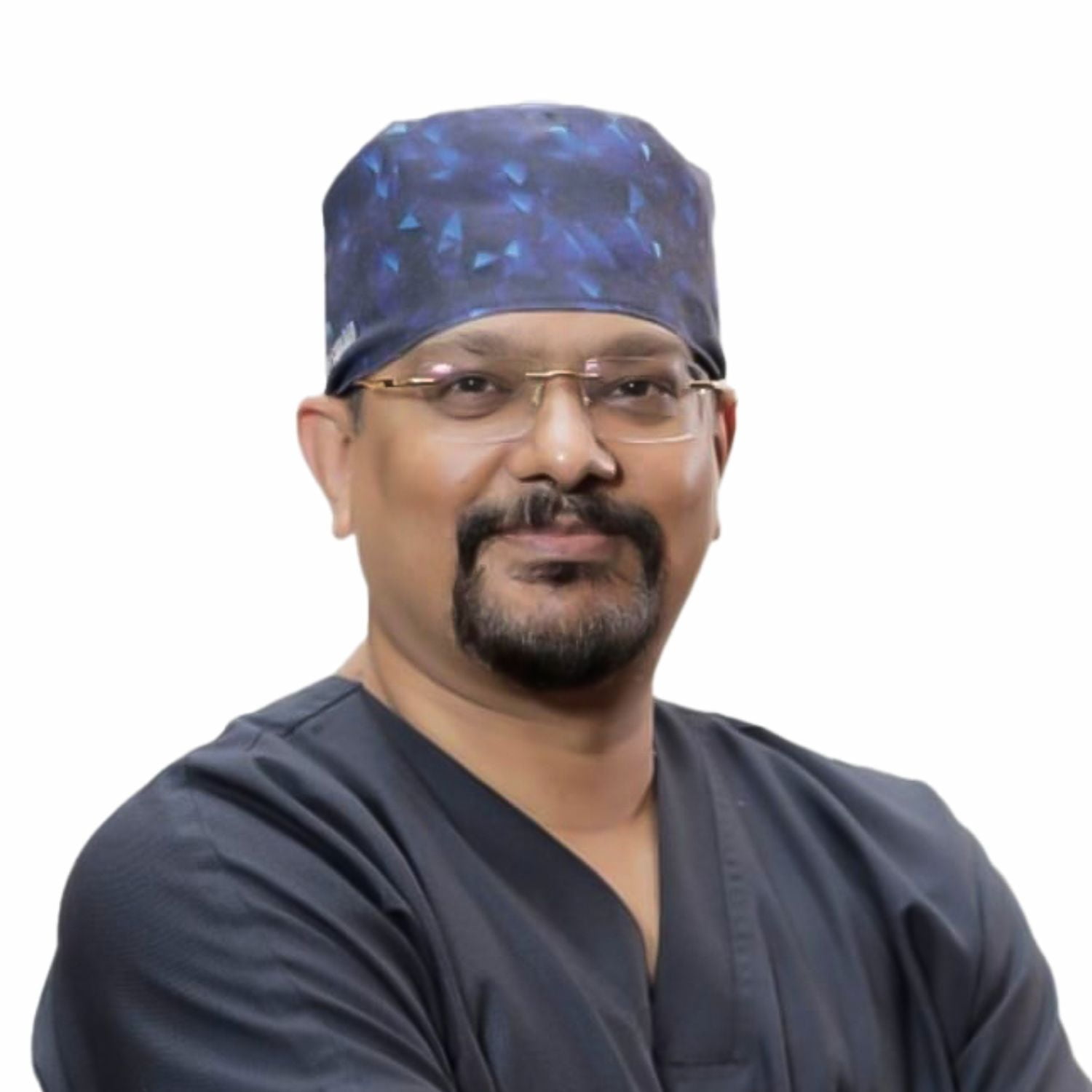Aortic Root Replacement
Dr. Dhiren Shah guides you through the complete process of
Interview with Dr. Dhiren Shah, Gujarat’s First Heart Transplant Surgeon and Finest Cardiac Surgeon, Marengo CIMS Hospital
Interviewer (Patient): Good morning, Dr. Shah. Thank you for joining me today. Can you explain what an aortic root replacement is?
Dr. Dhiren Shah: Good morning. I’d be happy to explain. An aortic root replacement is a surgical procedure that involves replacing the aortic root, the section of the aorta closest to the heart, which includes the aortic valve and the openings to the coronary arteries. This procedure is necessary when there are conditions such as aneurysms, dissections, or severe valve disease affecting this part of the aorta.
Interviewer: What conditions typically necessitate an aortic root replacement?
Dr. Shah: The most common conditions include:
- Aortic root aneurysm: An abnormal bulging of the aortic root that can lead to rupture if not treated.
- Aortic dissection: A tear in the aortic wall that can extend to the aortic root.
- Severe aortic valve disease: Conditions like aortic stenosis or regurgitation that affect the valve function.
- Connective tissue disorders: Genetic conditions like Marfan syndrome that weaken the aortic wall.
Interviewer: What are the symptoms that indicate someone might need an aortic root replacement?
Dr. Shah: Symptoms can vary depending on the underlying condition but often include:
- Chest pain: Typically severe and sudden, especially if an aneurysm or dissection is present.
- Shortness of breath: Due to the heart’s impaired ability to pump blood effectively.
- Heart murmur: An abnormal heart sound detected during a physical exam.
- Fatigue: Especially during physical exertion.
- Palpitations: Irregular heartbeats or a rapid heart rate.
If an aneurysm or dissection is suspected, immediate medical evaluation is necessary.
Interviewer: How is the need for an aortic root replacement diagnosed?
Dr. Shah: Diagnosis typically involves several imaging studies:
- Echocardiogram: An ultrasound of the heart to assess valve function and measure the size of the aortic root.
- CT Scan or MRI: Provides detailed images of the aorta and can help visualize aneurysms or dissections.
- Chest X-ray: Can show an enlarged aorta or signs of heart failure.
Interviewer: Can you describe the surgical procedure for an aortic root replacement?
Dr. Shah: Certainly. The procedure is complex and typically involves the following steps:
- General Anesthesia: The patient is put under general anesthesia to ensure they are asleep and pain-free during the surgery.
- Incision: A median sternotomy is performed, where the chest is opened to access the heart.
- Cardiopulmonary Bypass: The heart is connected to a heart-lung machine that takes over the functions of the heart and lungs during surgery.
- Removing the Aortic Root: The damaged section of the aorta, including the aortic valve and sometimes the coronary artery openings, is removed.
- Graft Placement: A synthetic graft is used to replace the removed section. If the aortic valve is also diseased, a composite graft with an integrated valve is used.
- Reattaching Coronary Arteries: The coronary arteries are reimplanted into the graft.
- Closing the Chest: Once the procedure is complete, the heart is restarted, and the chest is closed.
Interviewer: What is the recovery process like after an aortic root replacement?
Dr. Shah: Recovery involves several stages:
- Intensive Care Unit (ICU): Patients typically spend a few days in the ICU for close monitoring.
- Hospital Stay: The total hospital stay is usually around one to two weeks, depending on the patient’s recovery.
- Home Recovery: Full recovery at home can take several weeks to months. Patients will need to follow a strict regimen of medications, physical therapy, and follow-up appointments.
Interviewer: What are the potential risks and complications associated with this surgery?
Dr. Shah: While aortic root replacement is generally safe, it does carry some risks, including:
- Bleeding: During or after surgery.
- Infection: At the incision site or internally.
- Blood Clots: Which can lead to stroke or other complications.
- Valve Dysfunction: If the new valve does not function properly.
- Heart Attack: Due to impaired blood flow during surgery.
However, with advances in surgical techniques and post-operative care, the success rate is high.
Interviewer: Are there any advancements in the treatment and management of aortic root conditions?
Dr. Shah: Yes, there have been significant advancements:
- Minimally Invasive Techniques: Such as endovascular procedures, which are less invasive and have quicker recovery times.
- Improved Grafts and Valves: Modern graft materials and valve designs are more durable and biocompatible.
- Genetic Research: Better understanding of genetic conditions has improved early diagnosis and preventive measures.
Interviewer: What advice would you give to patients at risk of aortic root conditions?
Dr. Shah: My advice is to manage risk factors diligently:
- Control Blood Pressure: Through lifestyle changes and medications.
- Regular Check-Ups: Especially if there is a family history of aortic disease.
- Healthy Lifestyle: Avoid smoking, maintain a balanced diet, and exercise regularly.
- Be Alert to Symptoms: Seek immediate medical attention if you experience severe chest pain, shortness of breath, or other concerning symptoms.
Interviewer: Thank you so much for your time and expertise, Dr. Shah. This has been incredibly informative.
Dr. Shah: You’re welcome. I’m glad I could provide some clarity on this important issue. Stay healthy and take care.
Available
Monday to Saturday: 9am - 6pm
Address
CIMS Hospital in Ahmedabad, Gujarat

